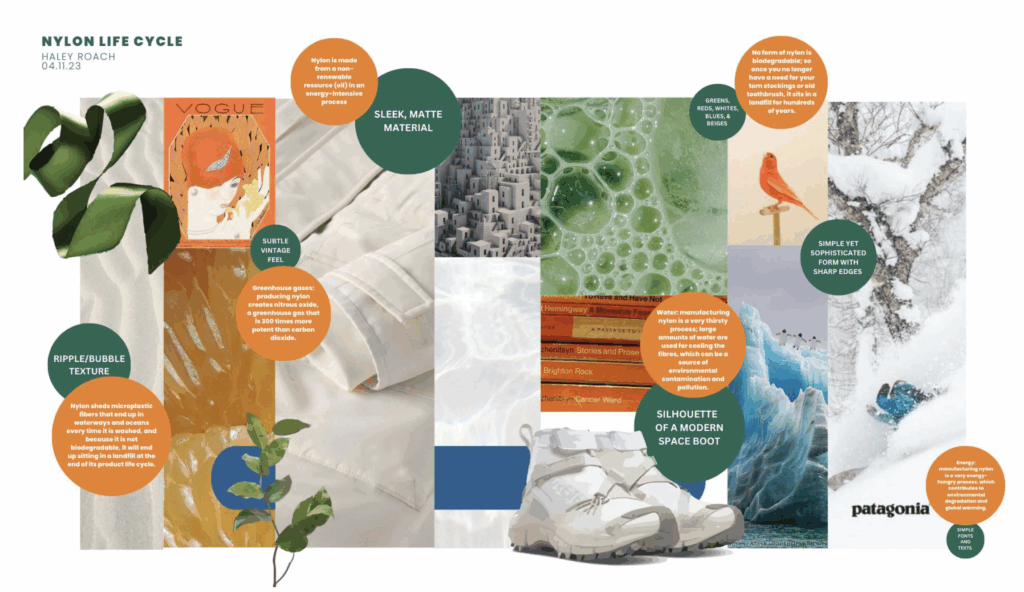Class Description:
An introduction to the principles, research methodologies, and practice of life cycle assessment for artists and designers. Life Cycle Assessment (LCA) is a method for the assessment of the environmental impacts of products and services. This course applies those methodologies specifically to materials used in student’s major projects. Our approach is holistic and applies a systems perspective. Students will be introduced to and research different impacts on human and nonhuman health, justice, and ecosystems that occur throughout the extraction, production, use and disposal of a product or service.
Course content: readings, videos, sound files of presentations by professor and others, class conversations on remote platform
Assignments: Project proposal, material research, infographic, bibliography of sources, and project: a piece resulting from the research into materials used in one of their major studio projects
Why this class?
* Most importantly, Life Cycle Assessments are a key skill for any sustainability practitioner in art and design. Each field conducts their LCAs with different purposes and outcomes, but there is always a shared focus on making resilient material choices that consider from a systems perspective issues of justice, health, and the environment. We are thrilled to be able to create this course as part of the core requirements for the Sustainability Minor, as a partner to ENVI201 the Environmental Forum
* Also, this one credit solves an annoying issue we have run into with the Sustainability Minor credits; namely, ENVI201 is only 2 credits (and can count as part of your MassArt LASS Gen Ed requirements if you so wish). Since MassArt only has 3 credit courses, this has left some students in a difficult situation as seniors with a missing LASS and Sustainability Minor credit. Life Cycle Stories solves this problem.
We always recommend students take ENVI201 & ENVI202 in their sophomore or junior year at the latest. It can be tricky to wait till their senior year in case their schedule has a significant major conflict.

